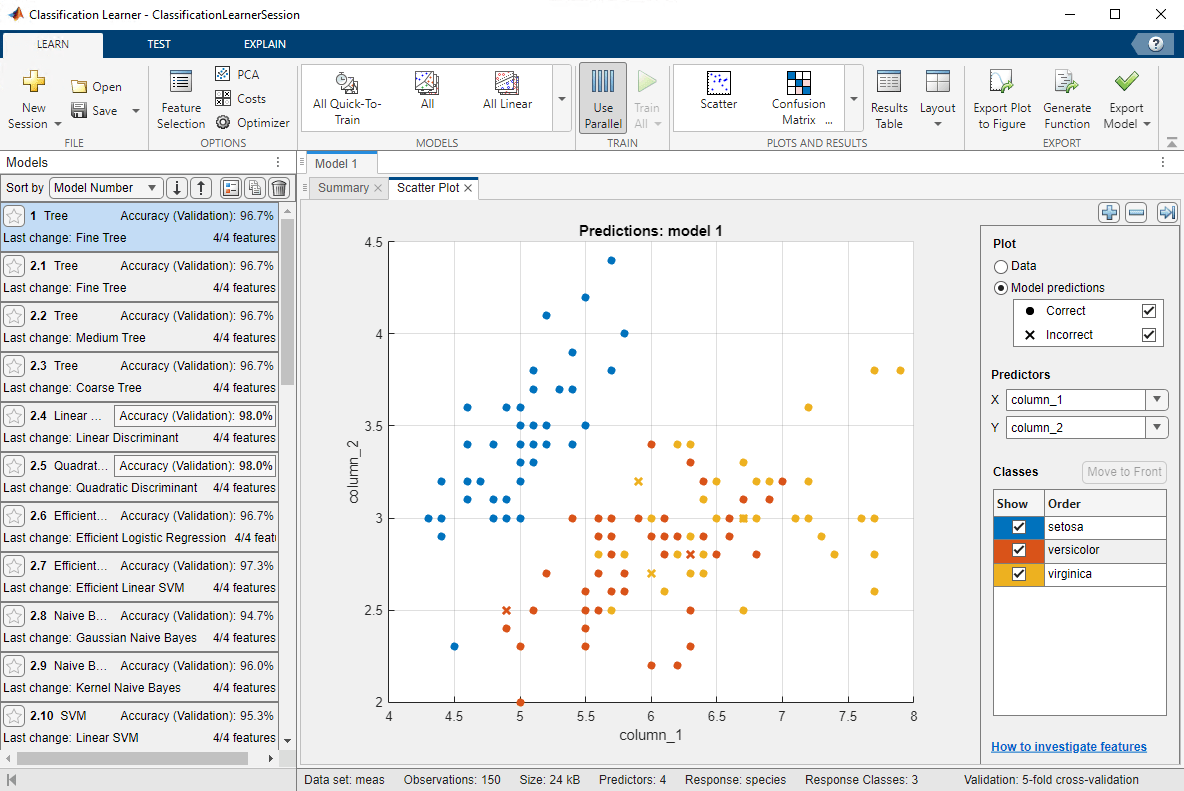分类学习器
使用有监督的机器学习训练模型以对数据进行分类
打开 分类学习器 App
MATLAB 工具条:在 App 选项卡上的 Machine Learning 下,点击该 App 的图标。
MATLAB 命令提示符:输入
classificationLearner。
示例
- Train Classification Models in Classification Learner App
- 选择分类数据或打开保存的 App 会话
- Automated Classifier Training
- Feature Selection and Feature Transformation Using Classification Learner App
- Choose Classifier Options
- Visualize and Assess Classifier Performance in Classification Learner
- Explain Model Predictions for Classifiers Trained in Classification Learner App
- Export Classification Model to Predict New Data
编程用途
限制
分类学习器不支持将模型部署到 MATLAB Production Server 中的 MATLAB Online™。
版本历史记录
在 R2015a 中推出
另请参阅
App
函数
fitctree|fitcdiscr|fitcsvm|fitclinear|fitcecoc|fitcknn|fitckernel|fitcensemble|fitcnet|fitglm
